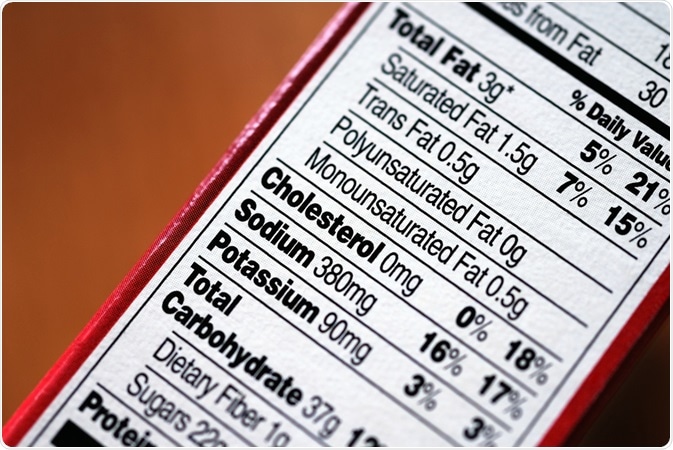Trans fat is a type of unsaturated fat that is not common in nature but can be produced when vegetable fats are hydrogenated through chemical reactions to become saturated fats.

Image Credit: Debbi Gerdt / Shutterstock.com
Saturated and unsaturated fats
All fats have a chemical structure that consists of long hydrocarbon chains, which is a series of carbon atoms bonded together and hydrogen atoms to stabilize the molecule by filling in the gaps.
Each bond that connects to carbon atoms in the acid chain can be single or double. A single bond refers to a single pair of electrons in the bond with more electrons available to form bonds with hydrogen atoms around the carbon atoms. Conversely, a double bond requires two pairs of electrons and leaves less free electrons to bond with hydrogen atoms around the chain.
The saturation of a hydrocarbon chain refers to how many hydrogen atoms are present in the chain. For hydrocarbon chains with all single bonds, there are more hydrogen atoms bonded around the carbon atoms, thereby indicating that this compound is a saturated fat. If there are double bonds present, however, there are fewer hydrogen atoms because the electrons are used to create the double bonds, which will then lead the compound to be referred to as unsaturated.
Hydrogenation of vegetable oils
Naturally occurring vegetable oils are usually unsaturated fats; however, for some commercial purposes, it is beneficial to create saturated fats from vegetable oils through a process known as hydrogenation.
Chemical hydrogenation is a process that involves a catalyst to reduce the number of double bonds present by adding hydrogen atoms into the hydrocarbon chain. The process is controlled to produce the optimal physical and chemical properties for its intended purpose. Factors that are considered in this process include pressure, temperature, catalyst, time, the fat source, and the properties of the reaction vessel.
How To Harden Vegetable Oils Through Hydrogenation | Organic Chemistry | Chemistry | FuseSchool
In theory, the process of hydrogenation should be completed to produce a fully saturated fat the does not contain any double bonds. However, there is no method that is 100% effective; therefore, some double bonds nearly always remain. This is known as partial hydrogenation, which occurs when the saturation is incomplete and some double bonds remain or may shift to another position of the chain.
This chemical process often affects partially hydrogenated fats in that the atomic configuration is altered, which changes the properties of the fat.
Cis and trans fat configurations
The positioning of the atoms around the double bonds of unsaturated fats is not always the same and depends on where the hydrogen atoms rest around the carbon chain. They are differentiated by the terms cis and trans configuration, also known as elaidic acid and oleic acid, respectively.
Trans configuration involves the arrangement of hydrogen atoms in a more linear way, which changes the properties of the fat including the melting point, shelf life, flavor, and stability. These properties are favorable for the commercial food industry and are used in many products such as margarine and baked goods.
Cis fat is abundant in nature; however, with the chemical hydrogenation process used by commercial industries, both cis and trans fats can be produced. While it depends on the manufacturing process, on average, 25-45% of hydrogenated oils are trans fats.
Health implications
High intake of trans fat in the diet can have negative consequences on overall health, including increased risk of serious health conditions such as cardiovascular disease.
Trans fat is not usually labeled as such on commercially available products and, instead, is recognized as partially hydrogenated vegetable oil or vegetable oil, although it depends on the specific regulations of the country. As such, it is important for individuals to be aware of products with trans fat in their ingredients, even if it is not specifically labeled.
References
Further Reading
Last Updated: Nov 18, 2022